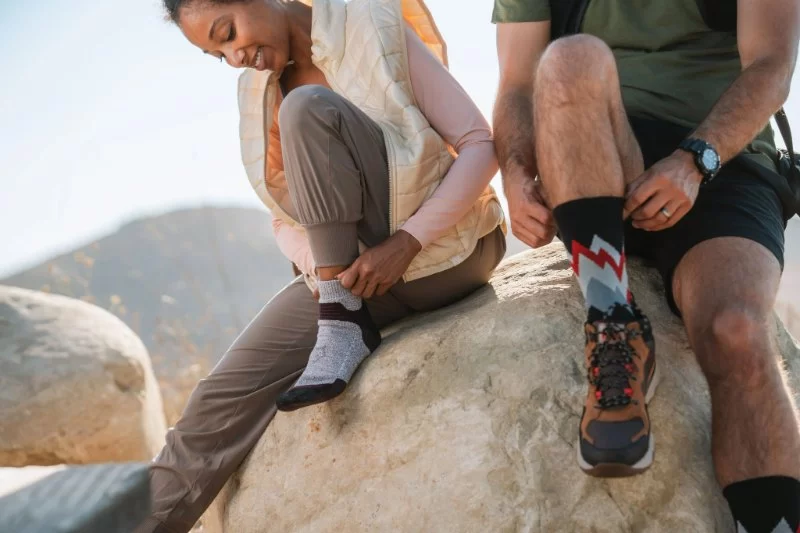- why-the-right-hiking-socks-matter-in-cold-weather
- materials-make-the-difference-in-hiking-socks
- key-features-to-look-for-in-cold-weather-hiking-socks
- personal-story-frozen-trail-taught-me-a-lesson
- common-mistakes-when-choosing-hiking-socks
- where-to-find-trusted-hiking-gear-recommendations
1. Why the Right Hiking Socks Matter in Cold Weather
When hiking in cold temperatures, your choice of socks can mean the difference between a successful adventure and a miserable, potentially dangerous experience. Choosing the right hiking socks for cold weather goes far beyond comfort—it’s about insulation, moisture management, and preventing frostbite. In freezing conditions, your toes are often the first part of your body to suffer, and poorly chosen socks can quickly lead to numbness, blisters, or worse.
A good cold-weather hiking sock is your first line of defense against harsh conditions. It forms a barrier that helps trap warmth, wick away sweat, and protect your skin from friction and freezing. When your feet stay warm and dry, your whole hiking experience improves dramatically.
2. Materials Make the Difference in Hiking Socks
2.1 Merino Wool: The Gold Standard
Merino wool is the reigning champion when it comes to cold-weather hiking socks. Its natural fibers regulate temperature better than any synthetic material, and it's both soft and odor-resistant. Unlike cotton, merino wool continues to insulate even when damp—a key feature on snowy or icy trails.
2.2 Synthetic Blends: Reinforcement and Durability
High-quality hiking socks often include a blend of nylon, polyester, and spandex. These materials add durability, compression, and fit retention, preventing sagging or bunching in your boots. Look for socks labeled “technical” or “performance” blends for rugged terrain.
2.3 Avoid Cotton at All Costs
Cotton may feel cozy at first, but once it gets wet, it stays wet. Cold, damp cotton next to your skin is a recipe for disaster. It’s a major cause of blisters and increases the risk of hypothermia in colder climates. Save the cotton for the campsite, not the trail.
3. Key Features to Look for in Cold Weather Hiking Socks
3.1 Cushioning and Thickness
Cushioned socks offer better shock absorption on rocky trails and more warmth during extended outdoor exposure. However, you’ll need to balance thickness with your boot fit—too much padding can lead to tightness and reduced blood circulation.
3.2 Over-the-Calf vs. Crew Length
Crew-length socks are generally sufficient for moderate cold, but for snow-covered trails or sub-zero temperatures, over-the-calf styles provide extra insulation and protection against snow getting into your boots.
3.3 Seamless Construction and Arch Support
Modern hiking socks often feature seamless toes and targeted compression zones around the arch and ankle. These details reduce the chance of blisters, provide a snug fit, and improve circulation, which helps keep your feet warm and energized throughout your hike.
4. Personal Story: A Frozen Trail Taught Me a Lesson
Last December, I joined a group hike in northern Arkansas after a snowstorm. I had my gear sorted—or so I thought. But I made a rookie mistake: I wore a pair of thick, fluffy cotton socks thinking they'd be “warm enough.” By the end of the first hour, my feet were soaked from sweat and snow, and I was losing feeling in my toes. I had to turn back halfway through the trail, limping with each step.
One of the more experienced hikers, a guy named Neil, tossed me an extra pair of his merino wool socks. I changed into them behind a rock, and within 20 minutes, I could feel my toes again. It was a lesson I’ll never forget. Now, whenever someone asks me about choosing the right hiking socks for cold weather, I always say: never underestimate the power of quality materials.
5. Common Mistakes When Choosing Hiking Socks
5.1 Ignoring Boot Fit
Even the best socks can’t help you if they make your boots too tight. Tight boots restrict blood flow, which reduces warmth. Always try on your socks with your hiking boots before heading out.
5.2 Choosing One-Size-Fits-All Options
Size matters. Ill-fitting socks can bunch, slide, or compress uncomfortably. Most quality brands offer specific sizing—don’t settle for “medium” if you’re a borderline large. Check size charts, especially if buying online.
5.3 Not Packing Extras
Winter hiking is unpredictable. Always carry at least one spare pair in a waterproof bag. If your first pair gets wet, you’ll be thankful for the backup. It’s a simple step that could save your entire trip.
6. Where to Find Trusted Hiking Gear Recommendations
Shopping for cold-weather hiking gear doesn’t have to be a guessing game. Whether you're heading out on your first winter hike or planning a multi-day backcountry adventure, quality gear is key to both safety and enjoyment. If you’re looking for reliable socks, trail-tested boots, and expert advice, our friends at Pine Cliff Resort offer a curated selection of products chosen specifically for outdoor enthusiasts. Their team knows the gear because they use it themselves—and they’re happy to share what works and what doesn’t.
Don’t wait until you're halfway up a snowy ridge to realize your socks are failing you. Make smart, informed choices now so you can focus on the beauty of the trail instead of the pain in your toes.







